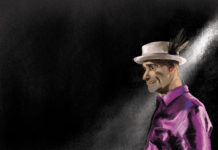<strong>Near death experiences confirmed, say scientists</strong><br />
<br />
Scientists at the University of Southampton believe that there may be “a small amount” of life after death, The Telegraph reports.
Dr. Sam Parnia, study leader formerly at Southampton University and now at the University of New York, spoke of a case where a patient experienced awareness after his heart stopped: “We know the brain can’t function when the heart has stopped beating, but in this case conscious awareness appears to have continued for up to three minutes into the period when the heart wasn’t beating, even though the brain typically shuts down within 20-30 seconds after the heart has stopped.”
Parnia and his team studied 2060 cardiac arrest patients in the U.K, U.S., and Austria. While 330 survived, 140 said they did feel awareness during their resuscitation.
Common experiences included a sense of peacefulness, a bright light, time slowing down or speeding up, feelings of drowning, and a separation from their body.
Parnia believes the research merits further investigation, saying that “a higher proportion of people may have vivid death experiences, but do not recall them due to the effects of brain injury or sedative drugs on memory circuits.”<br />
<br />
<br />
<strong>Nobel prize laureates announced</strong><br />
<br />
The 2014 Nobel Prize in Physics, Chemistry, and Medicine were announced the week of Oct. 6. Among the winners were nationals from Japan, U.S., Germany, U.K, and Norway.
Neuroscientists John O’Keefe, Edvard Moser, and May-Britt Moser took home the Nobel Prize in medicine for the discovery of the brain’s “inner GPS” and the specific brain cells used in orientation, the Associated Press reports.
While the research has only been done on animals and not on human brains, Joshua Sanes of Harvard University’s Center for Brain Research believes that the research is fundamental in understanding the brain.
Stanford University professor William E. Moerner, Eric Betzig, and scientist Stefan Hell won the Nobel Prize in chemistry for their developments in microscopy. Using fluorescent molecules, they were able to break the resolution cap previously thought to be limited by the speed of light.
The Nobel Prize in physics was awarded to Isau Akasaki and Hiroshi Amano of Nagoya University, Japan and Shuji Nakamura of the University of California at Santa Barbara. Together, they invented a blue-light LED that requires less energy than traditional lighting. The Nobel Committee said that “as about one fourth of world electricity consumption is used for lighting purposes, the LEDs contribute to saving Earth’s resources.”<br />































